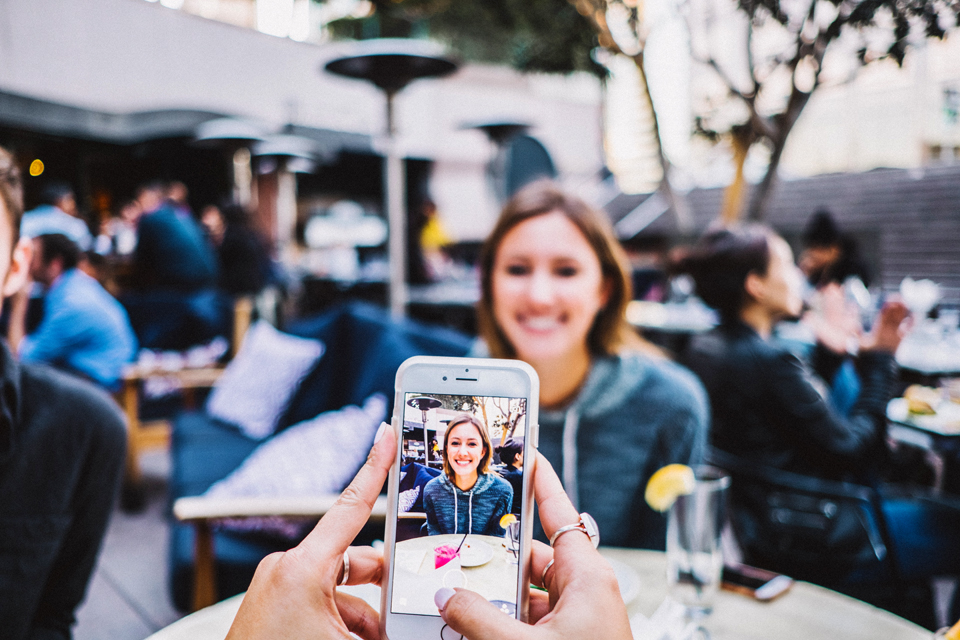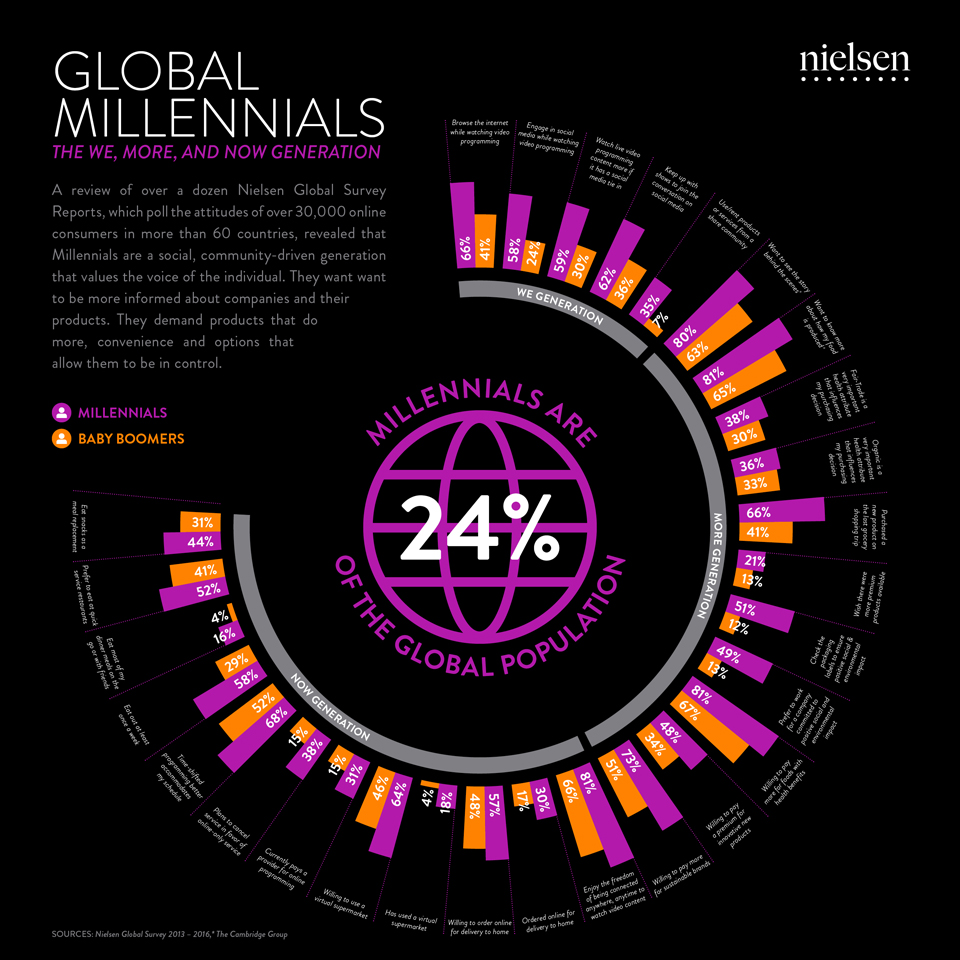Millennials, the We, Now, and More generation
A study, conducted by Nielsen on a sample of over 30,000 online consumers in more than 60 countries, shows the social and buying attitudes of Millennials. The infographic helps us understand more about this digital and community-driven generation.
WE GENERATION
Millennials, born between 1980 and 1997, represent 24% of the global population. They usually have a limited buying power but their statistical relevance is able to influence trends in many sectors, especially technology and social experiences, including food services and leisure. Millennials actively use social networks and are willing to buy and share items and services online.
This generation is particularly interested in sharing and networking. Traditional mass media is used together with new media: 66% of Millennials surf the Internet while viewing video programming, 58% use social media while watching it, 62% follow shows in order to participate in discussions on social media and almost 6 out 10 prefer to watch live video programming that is tied in with social media. This represents a multitasking and integrated approach to media which shapes your own story by linking several sources.

NOW GENERATION
More and more Millennials have access to the Internet, so “hic et nunc” (literally “here and now”) consumption of multiple content is significantly more important for this generation than for any previous ones, including their parents, the Baby Boomers. Streaming content is prefered by 68% of them because it better accommodates their personal schedule. Eight out of ten, in fact, want to feel free to watch video content anywhere and at anytime. As a consequence, 38% of Millennials (compared to only 15% of Baby Boomers) are planning to use online-only media services and 31% already use a provider for online programming. This is the reason of successful services such as Netflix and Hulu.
Millennials desire for speed and to multi-task affect eating habits as well. More than half of Millennials (twice that of Baby Boomers) go out to eat at least once a week and 52% prefer to eat at restaurants with fast service or eat snacks instead of a full meal (44%). 16% eat the majority of their dinner meals out or with friends. This percentage is four times higher than Baby Boomers and, compared to the past, reflects a change in the habit to eat dinner together each night as a family.
Despite the familiarity with online services and the attitude to be always connected, only 30% of Millennials order online for take-out delivery and 18% use a “virtual supermarket” (respectively, only 17% and 4% of baby boomers do the same). However, 57% are willing to buy products and services online and that statistic is even higher for “virtual supermarkets” (64%). These millennial percentages represent an interesting and perhaps latent demand for online purchases that is not well satisfied yet.

MORE GENERATION
Millennials are barraged with information gathered online. This leads them to feel the need to know more in order to increase their own awareness, act responsibly, choose the best products and services or even demand more from the market.
They want to be more informed about companies and their products. 80% of Millennials want to know the story behind companies and their products. A similar percentage want to be in control of choices regarding food and its production, compared to 65% of Baby Boomers. More than 35% consider healthy and organic food very important. As a consequence, they are also willing to pay more for healthy food, sustainable brands and innovative products. About half Millennials check the labels on packaging and want to contribute to positive social and environmental impact by working for a company who is dedicated to these principles as well.
Millennials were born connected so they represent a fluid, multi-tasking generation, who ask for content on demand, whenever and wherever they want it through their smartphones. They share moments, opinions and experiences on social media, managing their own visibility online, and are globalized and “mobile”. They are also willing to preserve the Planet, so they gather information online and try more and more to make responsible choices when buying. Brands need to interact with Generation Y, keeping up with new trends and responding to this huge demand for customizable and shareable experiences which reflect the ongoing search for what is the best for themselves as well as for the environment and society. As a proud member of Generation Y, I like to believe that, through continuously creating new, valuable initiatives and offering products and services that are healthy and tell remarkable and sustainable true stories, companies can have significant business opportunities from this generation who are about to move into its prime spending years. Both as customers or workers, Millennials are quickly building a different economy where it’s often more important to access products and services rather than owning them and where purchase experience is influenced by a more open, interconnected world, where price comparisons are available at their fingertips.

For further information about the topic, please check out this interactive infographic:
http://www.goldmansachs.com/our-thinking/pages/millennials/
Photo Credits: unsplash.com
Reference: ninjamarketing.it
*Vocabulary (Source: Wikipedia):
- Millennials: “Millennials (also known as the Millennial Generation or Generation Y, abbreviated to Gen Y) are the demographic cohort between Generation X and Generation Z. There are no precise dates for when the generation starts and ends. Demographers and researchers typically use the early 1980s as starting birth years and use the mid-1990s to the early 2000s as final birth years for the Millennial Generation.”
- Baby Boomers: “Baby Boomers are people born during the demographic post–World War II baby boom approximately between the years 1946 and 1964. This includes people who are between 52 and 70 years old in 2016, respectively, according to the U.S. Census Bureau”
Salva


One comment on “Millennials, the We, Now, and More generation”